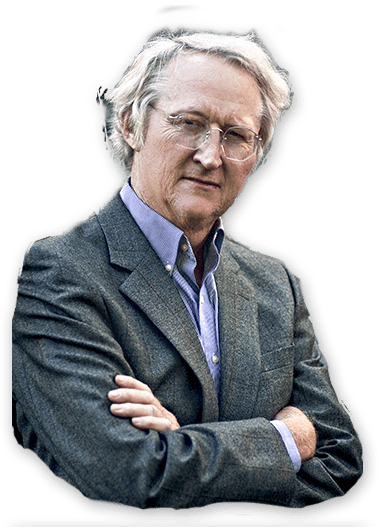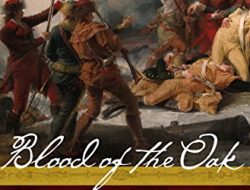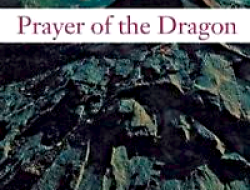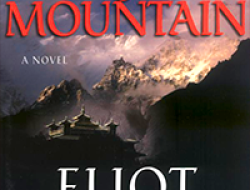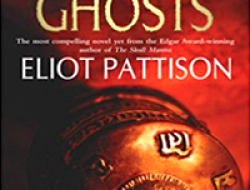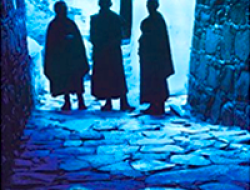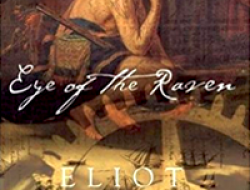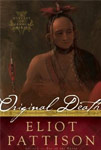
ABOUT THE BOOK
Publisher: Counterpoint (July 23, 2013)
Despite the raging war between French and British, Scottish exile Duncan McCallum has begun to settle into a new life on the fringes of colonial America, traveling the woodlands with his companion Conawago, even joining the old Indian on his quest to find the last surviving members of his tribe. But the joy they feel on reaching the little settlement of Christian Indians is shattered when they find its residents ritually murdered. As terrible as the deaths may be, Conawago perceives something even darker and more alarming: he is convinced they are a sign of a terrible crisis in the spirit world which he must resolve.
AUTHOR’S NOTE
Walking in 18th century forests…
Often I have been asked why I would choose to write about natives of lost tribes wandering through 18th century woodlands. I have studied those natives since I was a boy searching for their arrowheads in Maryland fields, consuming every account and chronicle about them I could lay my hands on. Creating these characters has been a way to learn more, in new dimensions. Any good novelist draws close to his characters, and because I write novels in series my characters become longterm companions. When these Nipmucs, Mohawks and Oneidas walk at my side my heart is uplifted. They were a strong, quiet people whose bonds with nature were extraordinary, imbued with a wisdom that could not calibrate to European standards. Many of them understood that they were becoming exiles in their own land, that the world was sweeping them aside. But they stood, and fell, with dignity, like the ancient oaks dropped under European axes. Once when my late night writing descended into drowsiness I had a momentary vision of a coppery hand reaching in greeting from forest shadows, and I awoke with a thrill. These people are alive in me. I hold them in my heart and hope others can grow to do the same.
REVIEWS
“1760, New York Colony: Exiled Scot Duncan McCallum seeks only to avoid the fighting between the French and English and accompany his mentor, Conawago, on a journey to find the last living members of Conawago’s Nipmuc tribe. However, Duncan’s find of a murdered Scot drowned in Lake Champlain and the discovery of slaughtered Christian Indians at Bethel Church send the pair on a different and more dangerous quest, one that will take Duncan into the bowels of the earth and to an island of ghosts peopled with fierce human enemies. Their mission will lead Duncan and Conawago deep into the heart of a conspiracy that stretches far back into the past as they attempt to save five lost children and the imperiled Iroquois confederacy.
Original Death sweeps the reader along on a compelling and suspenseful hero’s journey in which the realms of the spirit world of the Iroquois mingle with the harsh world of the colonial era frontier and the military ambitions of the French and English colonial powers. Pattison’s riveting storytelling and intriguing plot kept me entranced from the first page. His understanding of the complexities of the era and the frontier make his portrayal of Duncan’s and Conawago’s quest a multi-layered and complex read, one to savor. It fascinates and comes very highly recommended.” –Historical Novel Society Review “Editor’s Choice”
“Edgar-winner Pattison combines action, period details, and a whodunit with ease in his impressive third mystery set in Colonial America (after 2010’s Eye of the Raven). The French and Indian War is in its sixth year in 1760, and the American wilderness is full of armed men lusting to soak the land in blood for the sake of distant kings.? Against this backdrop and the continued encroachment of the white man on the traditions and lands of the American Indian, Scottish exile Duncan McCallum is trying to help his Nipmuc friend, Conawago who’s given up hope of ever seeing another member of his tribe reunite with a previously unknown relative. The quest gets off to an ominous start with McCallum’s discovery of a dead soldier tied to a wheel at the bottom of a lake. As the bodies pile up, Pattison pays tribute to the conventions of the murder mystery without sacrificing excitement or a nuanced look at the final stage of the war between the British and the French for control of North America. —Publisher’s Weekly
“Third in the Bone Rattler series, this novel continues Highlander Duncan McCallum’s American adventures after he and his friend Conawago discover the massacred remains of Christian Indians in a small settlement, and they attempt to rescue the few surviving children who have been abducted. Set during the French and Indian War, the story vividly depicts the wilderness landscape, the disparate Native Americans allied with the English army, the Highlanders hoping to start a new life, innocent settlers,missionaries, and spies. Every faction fights to retain a way of life that is foreign to the others, and McCallum somehow juggles them against each other, time and again thumbing his nose at torture,imprisonment, and death. Pattison twists a skein of plotlines and weaves Indian mysticism into a timecapsule portrait of America at a crossroads: a time of endings for some and the beginning of a revolution played out by cruel, compelling, and sometimes powerful people with warring visions. Themes of disillusionment and a vanishing way of life make this series in some ways similar to Cooper’s Leatherstocking Tales, though Pattison adds an element of psychological suspense comparable to Jean Zimmerman’s The Orphanmaster (2012) and a degree of human complexity that suggests Sarah Donati’s Wilderness novels.” –Jen Baker, Booklist Starred Review
“After Duncan McCallum and Conawago find the members of Bethel Church — Christian Iroquois — with their heads bashed in, and the local blacksmith and wheelwright, one of the last of the Nipmuc tribe, tortured to death, and the children of the community missing, the two friends set out to find the killer — or killers – in Original Death, the third mystery in this series set in Colonial America by Eliot Pattison.
Duncan and Conawago quickly separate, the latter heading north towards the French settlement of Montreal, the former south along Lake Champlain following the clues left behind. Duncan is quickly captured by the British authorities and accused of the crime, but escapes and travels westward, haunted by stories of a half-king that is coordinating an attack against the British for control of the region. There are many issues with the crime scene that trouble him: witnesses seeing a wagon heading south and yet Conawago immediately left for the north; what did he see there that Duncan had missed? Why kill the villagers and take the children? And what information did the old Nipmuc have that he was tortured to reveal?
Original Death is a superior mystery, but it is the journey that the reader takes with Duncan McCallum that makes it all that much more special. A minor quibble is that a map wasn’t included; one would have made it much easier to track Duncan’s trail across New York State to the shores of Lake Ontario and then up the St. Lawrence River to Montreal. There is a real sense of the time and place here, with an uneasy peace between the British and the Scottish brought in to assist with the war effort and between the Europeans and the local tribes of New York. War between England and France is simmering the in background, each side convinced the other is about to fall, both relying on native tribes to give them an advantage. The mystery surrounding the half-king is only one that Duncan and Conawago must solve: who is he, how did he achieve such power, was he involved in the murder and kidnapping at Bethel Church, and probably most importantly, what are his intentions?
As strong as the plot is, it is the elegantly crafted prose, almost lyrical in the way it weaves the story, that will draw readers in. Original Death is exciting and suspenseful, often mystical and frequently cruel and violent, but always true to the characters. One of the best books of the year.” –Mysterious Reviews
“Scotsman Duncan McCallum immigrated to the New World to start a new life, but danger finds him even in America’s most unsettled forests. The McCallum clan was wiped out in Scotland yet death and murder are not unique to Europe. As McCallum travels with his Indian companion Conawago to find the last members of his tribe, he steps into a deep and dark mystery that threatens to take his life at every turn. Massacred Indians, accusations and imprisonment by the British army eager to hang him, and a murderous Revelator who isn’t afraid to torture and kill anyone who threatens his grand plans create an exciting, intricate, and fast-paced trip through early America. The fate of the Native American way of life is direly threatened and the survival of the tribes McCallum knows and love hangs on the line. The deeper his involvement becomes, the harder his ultimate choice becomes: Can he possibly choose between the Natives who have taken him in and his highland heritage?
Pattison brings history alive in a colorful, factually accurate, and thrilling way. Once you step into this mysterious Colonial world, you’ll instantly be swept into a river of intrigue, multi-faceted characters, and life and death choices that will have you on the edge of your seat.– Jennifer Melville, San Francisco Book Review (5 Stars)
“Crime didn’t begin in America, but if you believe the circumstances in “Original Death,” set in pre-Colonial America, murder certainly got off to a strong start in the New World. In the region made familiar by the novels of James Fenimore Cooper, a lot of killing took place on mostly impromptu battlefields from Albany, N.Y., to the Canadian border and beyond.
In the days of the French and Indian War, as depicted by Eliot Pattison, a fine line existed between war and murder. As the novel opens, the ritual slaughter of nearly a dozen Christian Indians becomes a wartime cause celebre. The main character, exiled Scottish Highlander Duncan McCallum, is blamed by the occupying British forces for the crime. McCallum and his Indian comrade Conawago set out to find the real killer. They elude the British and face off against Indian rivals, the main one being a European-educated near-lunatic Mingo warrior known as The Revelator. If this were a movie, we’d marvel at the set decoration that splendidly evokes the period. The excellent prose narrative goes right to the matter in question, the state of the (pre-Colonial) human heart.” —Chicago Tribune
READER’S GUIDE
Trapped in the raging war between French and British, Scottish exile Duncan McCallum must find the answer to terrible murders occurring among the tribes and Scottish troops. As he pieces together the puzzle of violence and deception he realizes that it is not only the lives of Duncan and his friends that hang in the balance, but the very survival of the tribes themselves. With this third entry in his Bone Rattler series, award-winning mystery writer Pattison has penned a compelling, fast-paced drama marked by memorable characters and stark insights into the forces that shaped America’s early history.
- When he encounters the gale on Lake Ontario, Duncan reflects that he prefers to take his storms in the open. How might that be applied to other aspects of his behavior?
- Kassawaya and the Iroquois matrons reflect the vital role played by women in the culture of the woodland tribes. How is Kass like the older women Adanahoe and Tushcona? How is she different?
- Conawago is sometimes animated by joy and curiosity and at other times is a serene old sage. Yet he also suffers from profound sorrow. Which of his qualities resonate with you? How do these characteristics drive his character development and the plot overall?
- From a perch atop the cathedral in Montreal, Sagatchie speaks of never being able to understand the “cut world” of European settlements. Do you think this is just discomfort with the material aspects of European towns or is it something deeper?
- More than one early observer, including Benjamin Franklin, suggested that the Iroquois Confederation was the American counterpart to the ancient Roman empire. What aspects of the Iroquois depicted in Original Death might invite such a comparison?
- Lord Graham, who proves to have a leading role in the bloody uprising led by the Revelator, is a complex character with complex motivations. Do you ultimately see him as a villain or a victim? Would you say the same thing about Colonel Cameron?
- The woodland tribes depicted in the novel are very warlike yet very spiritual. How do these attributes drive the tribal characters? Is it his spiritual side or his warrior side that leads Sagatchie to his fate?
- What is considered the New World by the colonists in this series was very much an old world from the perspective of its natives. What are the different ways that the fading of their “old” world affects the Native American characters in Original Death? How might your own behavior change if you believed your people and your culture were being extinguished?
- Pattison has stated that this series tells the “big story” of the French and Indian War period through “little tales.” What do you think he means? Can you trace such “little tales” in Original Death?
- The “warriors” accompanying Duncan on his treacherous quest include a young Oneida woman, an old chieftain, a Welsh “witch,” a weaver of sacred belts, and the matriarch of the Iroquois people. Why do you think Pattison chose these particular companions for Duncan?
- Why do you think the Iroquois capital is described as “simpler and more complex than Duncan expected, uglier and more beautiful”?
- When faced with murders Conawago seeks a spiritual resolution while Duncan seeks what he would call justice. In what ways are these goals similar? In what ways are they different?
- A sense of inevitable tragedy looms over the Iroquois characters in Original Death. Could the same be said for certain other actors in this drama? Brother Xavier? Lord Graham? Ishmael? Duncan himself?
- As the author mentions in his Note, and as reflected in this novel, the Scottish soldiers who arrived in America were often embraced as brothers by the woodland tribes. What do you think were the reasons for this affinity?
- In his Author’s Note Pattison observes that the period during which this series is set played a critical role in defining America. What are some of the themes in Original Death that reflect this point?

